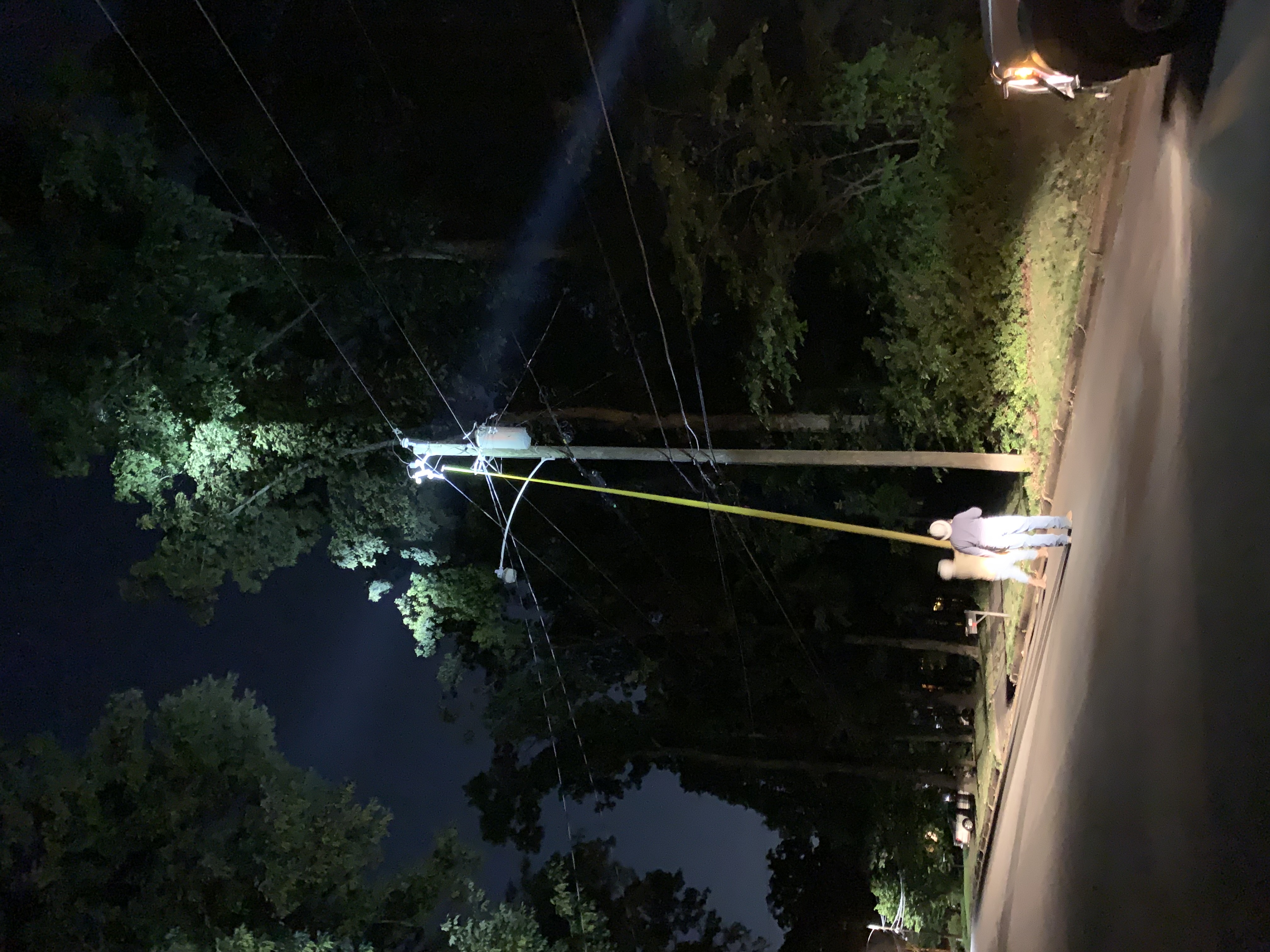Fuse cutout on:
[Wikipedia]
[Google]
[Amazon]

 In
In
 Each fuse holder typically has an attached pull ring that can be engaged by a hook at the end of a fiberglass hot stick operated by a lineworker standing on the ground or from a
Each fuse holder typically has an attached pull ring that can be engaged by a hook at the end of a fiberglass hot stick operated by a lineworker standing on the ground or from a
Patent 1,939,371
— 1930 cutout with single hinge
Patent 2,176,227
— 1932 cutout with double hinge
Patent 2,519,289
— 1944 cutout with lightning arrestor inside the insulator
Patent 6,583,708B1
— recent cutout design Electric power systems components Electric power distribution Safety switches

 In
In electrical distribution
Electric power distribution is the final stage in the delivery of electric power; it carries electricity from the transmission system to individual consumers. Distribution substations connect to the transmission system and lower the transmissi ...
, a fuse cutout or cut-out fuse (often referred to as a cutout) is a combination of a fuse
Fuse or FUSE may refer to:
Devices
* Fuse (electrical), a device used in electrical systems to protect against excessive current
** Fuse (automotive), a class of fuses for vehicles
* Fuse (hydraulic), a device used in hydraulic systems to protect ...
and a switch, used in primary overhead feeder lines and taps to protect distribution transformer
Single-phase distribution transformer in Canada
A distribution transformer or service transformer is a transformer that provides the final voltage transformation in the electric power distribution system, stepping down the voltage used in the di ...
s from current
Currents, Current or The Current may refer to:
Science and technology
* Current (fluid), the flow of a liquid or a gas
** Air current, a flow of air
** Ocean current, a current in the ocean
*** Rip current, a kind of water current
** Current (stre ...
surges and overloads. An overcurrent caused by a fault in the transformer or customer circuit will cause the fuse to melt and the switch mechanism to visibly open, disconnecting the transformer from the line. The device can also be opened manually by utility linemen standing on the ground and using a long insulating stick called a "hot stick
In the electric power distribution industry, a hot stick is an insulated pole, usually made of fiberglass, used by electric utility workers when engaged on live-line working on energized high-voltage electric power lines, to protect them from ...
".
Components
A cutout consists of three major components: *The cutout body, an open frame that supports the fuse holder and a ribbed porcelain or polymer insulator that electrically isolates the conductive portions of the assembly from the support to which the insulator is fastened. *The fuse holder, also called the "fuse tube" or "door", an insulating tube which contains the replaceable fuse element. When the contained fuse melts ("blows"), it opens the circuit, and the fuse holder drops out of the upper contact and hangs from a hinge on its lower end. This hanging fuse holder provides a visible indication that the fuse has operated and assurance that the circuit is open. The circuit can also be opened manually by pulling out the fuse holder using a hot stick. *The fuse element, or "fuse link", is the replaceable portion of the assembly that melts and breaks the circuit when the electric current through it exceeds its rated current value. The fuse holder may be replaced by a solid blade, which would allow the fuse holder assembly to be used as a switch only.Construction
The fuse elements used in most distribution cutouts are tin or silver alloy wires that melt when subjected to high enough current. Ampere ratings of fuse elements vary from 1 ampere to 200 amperes. Cutouts are typically mounted about 20 degrees off vertical so that the center of gravity of the fuse holder is displaced and the fuse holder will rotate and fall open under its own weight when the fuse blows. Mechanical tension on the fuse link normally holds an ejector spring in a stable position. When the fuse blows, the released spring pulls the stub of the fuse link out of the fuse holder tube to reduce surge duration and damage to the transformer and fuse holder. This quenches any arc in the fuse holder. Each fuse holder typically has an attached pull ring that can be engaged by a hook at the end of a fiberglass hot stick operated by a lineworker standing on the ground or from a
Each fuse holder typically has an attached pull ring that can be engaged by a hook at the end of a fiberglass hot stick operated by a lineworker standing on the ground or from a bucket truck
An aerial work platform (AWP), also known as an aerial device, elevating work platform (EWP), cherry picker, bucket truck or mobile elevating work platform (MEWP) is a mechanical device used to provide temporary access for people or equipment t ...
, to manually open the switch. While often used for switching, the standard cutout shown is not designed to be manually opened under load. For applications where the switch is likely to be used to interrupt power manually, a "load break" version is available that has an attachment to quench the arc.
Standards
Up until the mid-1990s each manufacturer used their own dimensional standards for cutout design; by the late 1990s most cutouts were of an "interchangeable design". This design allows for the interchangeable use of cutout bodies and fuse holders manufactured by different vendors.External links
Patent 1,939,371
— 1930 cutout with single hinge
Patent 2,176,227
— 1932 cutout with double hinge
Patent 2,519,289
— 1944 cutout with lightning arrestor inside the insulator
Patent 6,583,708B1
— recent cutout design Electric power systems components Electric power distribution Safety switches